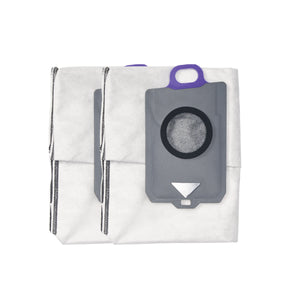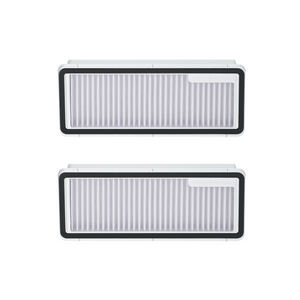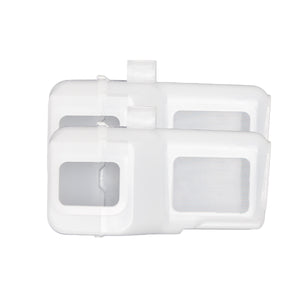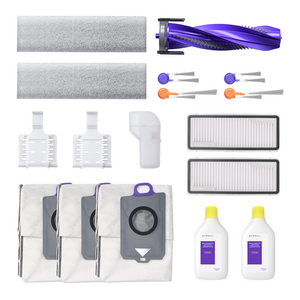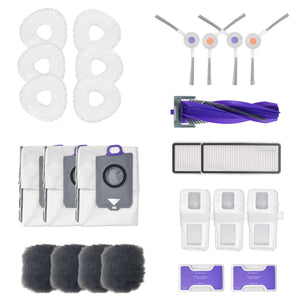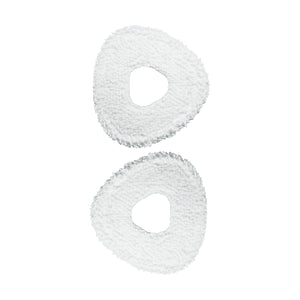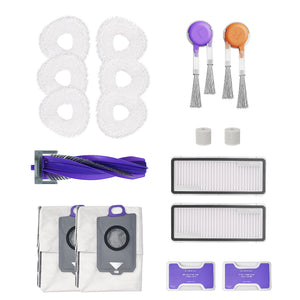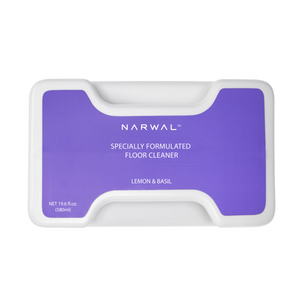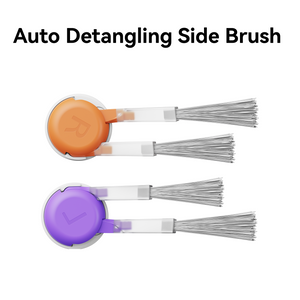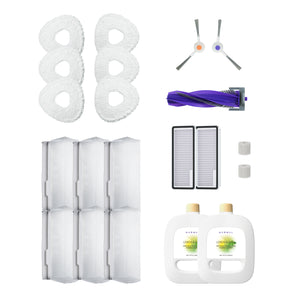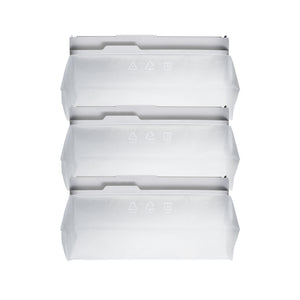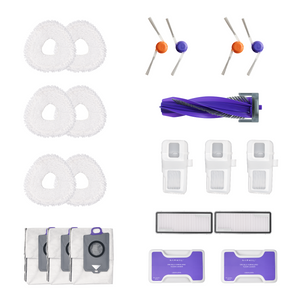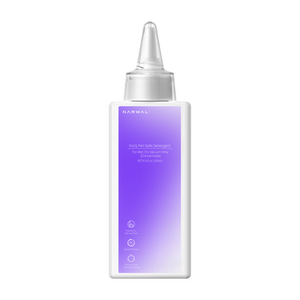Buying a robot vacuum can feel overwhelming — so many models, prices, and features to compare.
This guide breaks it all down step by step, helping you understand what really matters: suction power, navigation, mopping, and smart features.
By the end, you’ll know exactly how to choose the right robot vacuum for your floors, lifestyle, and budget — with confidence.
Step 1 — Understand Your Cleaning Needs
Choosing the right robot vacuum starts with understanding your home and lifestyle. The ideal model depends on your space, flooring, and daily habits. Before comparing features, take a moment to assess these key factors — they’ll help you narrow your options and find the perfect fit.
Home Size and Layout
Your home’s size and layout determine how powerful and intelligent your robot vacuum needs to be.
-
Small apartments: Compact models with shorter runtime and basic navigation are usually enough. They’re lighter, easier to store, and clean efficiently in smaller spaces.
-
Large or multi-room homes: Choose a vacuum with LiDAR navigation or AI mapping and at least 150 minutes of runtime. Models that support “recharge and resume” ensure full coverage without supervision.
Tip: The more complex your floor plan, the smarter your navigation system should be.
Floor Type
Different floor types call for different cleaning approaches. Hard floors like wood, tile, or laminate are generally easier to maintain, while carpets and rugs tend to trap dust, crumbs, and pet hair more deeply.
If your home has a mix of surfaces, choose a robot vacuum that can automatically adjust suction or lift its mop pads when transitioning from hard floors to carpets — this ensures efficient cleaning without damaging either surface.
For detailed guidance on how much suction power you’ll need for each type of flooring, see Step 2 below.
Pets and Allergies
If you have pets or allergy sensitivities, you’ll want to keep these factors in mind when choosing your robot vacuum. Homes with pets generate more hair and dander, while allergy-prone households need better dust control. Make note of this now — we’ll cover which features matter most for your situation later in this guide.
Cleaning Frequency
Your cleaning schedule determines which convenience features will benefit you most.
-
Daily cleaners: Prioritize models with auto-scheduling, quiet operation (below 60 dB), and efficient path mapping.
-
Weekly cleaners: Focus on higher suction power and dustbin capacity, since you’ll rely on fewer, deeper cleaning sessions.
Budget
Robot vacuums come in a wide range of prices, but smart spending matters more than spending big. Instead of deciding only by price, think about how often you’ll use it and what level of automation you really need. If you plan to clean daily or have pets, investing in a more durable, feature-rich model can be worth it in the long run.
For a closer look at how price connects to long-term value, check out Step 4 — Budget and Long-Term Value.
Quick Takeaway
By matching your home size, floor type, and lifestyle with the right features, you’ll instantly narrow your search to models that actually fit your needs — saving time, money, and frustration when it’s time to buy.
Step 2 — Compare Key Features That Matter Most
When choosing a robot vacuum, focus on the features that directly affect cleaning performance, convenience, and long-term value. Below are the essential functions to compare — and how to decide which ones truly matter for your home.
How Much Suction Power Do You Really Need?
Suction power determines how well a robot vacuum lifts dirt from your floors — but more isn’t always better.
-
Hard floors: 1,500–2,000 Pa is generally enough for everyday dust, crumbs, and pet hair.
-
Carpets or rugs: Look for 3,000 Pa or higher, since carpet fibers trap debris more deeply.
-
Mixed floors: Choose a model with auto suction adjustment that boosts power on carpets automatically.
|
Floor Type |
Recommended Suction |
Notes |
|
Hardwood / Tile |
1,500–2,000 Pa |
Ideal for fine dust and pet hair |
|
Carpets / Rugs |
3,000 Pa + |
Better for deep cleaning and fibers |
Tip: If your home has lots of rugs or pets, strong suction pays off more than any other feature.

Do You Need a Mopping Function?
Robot mops are perfect for maintaining daily floor hygiene — but their effectiveness varies.
-
Basic models: Use a damp pad for light stains or dust, best for small apartments.
-
Advanced systems: Clean with rotating or scrubbing mop pads, and can lift or avoid carpets automatically.
For example, the Narwal Flow goes beyond standard mopping — its FlowWash warm-water system cleans mop pads in real time during use, ensuring every pass stays fresh and streak-free.
Tip: If you have hard floors and minimal carpet, a mop function can replace most manual mopping.
What Type of Navigation Is Best?
Navigation affects how efficiently the vacuum moves through your home.
-
Random movement: Cheaper models that move until bumping into obstacles — suitable for small, open spaces.
-
LiDAR or laser mapping: Creates a digital map for faster, systematic cleaning.
-
AI camera navigation: Recognizes furniture and obstacles, and cleans room-by-room with precision.
If your home has multiple rooms, narrow hallways, or furniture clusters, go with LiDAR or AI-based navigation for full coverage.
Tip: The more complex your home layout, the smarter your navigation system should be.

Is Battery Life Really That Important?
Battery life determines whether the robot can clean your home in one cycle or needs to recharge.
|
Home Size |
Recommended Battery |
Typical Runtime |
|
Apartment |
2,500 mAh |
~90 minutes |
|
Mid-size home |
5,000 mAh |
~150 minutes |
|
Large home |
6,000 mAh + |
~200 minutes |
Longer battery life also improves convenience — fewer pauses, fewer charging interruptions, and less supervision.
Tip: If your robot supports “recharge and resume,” battery life becomes less critical.
Should You Get a Self-Emptying Model?
Self-emptying robots automatically empty their dustbin into a sealed base — a game-changer for convenience and hygiene.
-
Saves time: No more daily bin emptying.
-
Better for allergy sufferers: Reduces dust exposure.
-
Low maintenance: Bags last 1–2 months before replacement.
According to Home Cleaning Tech, 75% of users say self-emptying bases save time and reduce maintenance significantly.
Tip: Great for large homes or users with allergies — worth the higher upfront cost.
Other Features to Consider (Optional but Nice to Have)
-
App Control & Mapping: Lets you schedule, monitor, and customize cleaning areas via mobile app.
-
Noise Level: Quieter models (~55 dB) are ideal for homes with pets or children.
-
Dustbin Capacity: Larger bins (0.6 L+) mean fewer emptying sessions.
Tip: Focus on features that truly make daily cleaning easier, not just more high-tech.
Quick Takeaway
Not every feature fits every home. If you want efficiency and automation, prioritize navigation and battery life. If you value low maintenance, focus on self-emptying and mop cleaning systems. And if your goal is daily convenience, choose smart scheduling and quiet operation — the best robot vacuum is the one that truly fits your lifestyle.
Step 3 — Match Features to Your Lifestyle
Every household is different — the best robot vacuum for you depends on your daily routine, floor types, and cleaning habits.
By matching features to your lifestyle, you can focus on what truly improves your everyday cleaning, not just what looks advanced on paper.
Pet Owners
Homes with pets need vacuums that can handle fur, crumbs, and dander every day. Look for high suction power (3,000 Pa or more) and a tangle-free brush system to prevent hair wrapping. A larger dustbin (0.6 L +) and HEPA filter help maintain hygiene and air quality.
If you mop often, choose a model with auto-cleaning mop pads, so pet hair doesn’t spread across the floor.
Tip: Self-emptying models save time and keep allergens sealed — a plus for pet owners.
Allergy Sufferers
If allergies are a concern, air filtration and hygiene should be your top priorities. Choose a robot vacuum with a sealed HEPA filter that traps fine particles like pollen and dust. A self-emptying base minimizes direct contact with debris, while hot-water mop cleaning can help reduce bacteria buildup on hard floors.
Tip: TÜV-certified models that process data locally also help protect your health and privacy.
Busy Families
For families juggling work, school, and daily routines, automation brings real relief. Look for AI or LiDAR mapping, multi-room scheduling, and recharge-and-resume cleaning. These features ensure your robot covers every room automatically, even when you’re not home. Voice control and app scheduling let you manage cleaning hands-free.
Tip: Set cleaning sessions while you’re out — modern vacuums are quiet enough for background cleaning.
Small Apartments or Condos
In smaller spaces, compact design and quick operation matter most. Choose a quiet vacuum (under 60 dB) that’s lightweight and easy to store. You don’t need extreme suction — instead, focus on precise navigation and fast recharging for efficient daily cleaning.
Tip: A compact robot with quick mapping can clean a one-bedroom apartment in under 30 minutes.
Quick Comparison: Find Your Match
|
Lifestyle |
Recommended Features |
Why It Matters |
|
Pet Owners |
Strong suction, anti-tangle brush, HEPA filter |
Handles fur and allergens efficiently |
|
Allergy Sufferers |
HEPA filter, self-emptying base |
Reduces dust exposure during disposal |
|
Busy Families |
Smart mapping, long runtime, voice/app control |
Cleans multiple rooms automatically |
|
Small Apartments |
Compact design, quiet mode, quick recharge |
Space-saving and easy to manage |
Takeaway
Robot vacuums aren’t one-size-fits-all. By considering your home layout, family type, and daily schedule, you can focus on features that actually make your life easier — saving time, improving hygiene, and keeping your floors effortlessly clean day after day.

Step 4 — Budget and Long-Term Value
When choosing a robot vacuum, the goal isn’t to spend the least — it’s to invest wisely.
A high-quality robot vacuum can serve you for five years or more, delivering consistent performance and saving hours of manual cleaning every week. Over time, that makes premium models more cost-effective than frequent replacements of cheaper ones.
Understanding True Value
A $400 entry-level model may handle basic cleaning, but mid-range and premium vacuums — priced between $800 and $2,000 — offer stronger suction, smarter mapping, and self-maintenance features that cut daily effort dramatically.
Think long-term: A $1,000 robot that lasts six years costs less per year than replacing a $400 model every two.
What You Get at Each Price Range
|
Price Range (USD) |
Typical Features |
Long-Term Value |
|
Under $400 |
Basic suction, random movement, small dustbin |
Affordable but limited power and durability; best for small spaces |
|
$400 – $800 |
Stronger suction, app control, mapping functions |
Balanced performance for most homes; reliable and efficient |
|
$800 – $1,200 |
AI navigation, mop lift, HEPA filter, larger bin |
Smart automation; saves time and reduces manual effort |
|
$1,200 – $2,000+ |
Self-emptying base, real-time mop cleaning, warm water wash |
Longest lifespan, minimal maintenance, ideal for busy or pet-friendly homes |
Narwal’s lineup falls in this premium range — designed to deliver years of reliable performance with minimal upkeep.
Why Premium Models Pay Off Over Time
Premium robots often include maintenance-free stations, replaceable parts, and durable batteries, meaning fewer repairs or replacements over time.
They also clean more efficiently — consuming less energy and water thanks to smart automation.
For example, the Narwal Flow uses AI-assisted navigation, 22,000 Pa suction, and hot-water mop washing, allowing it to clean and maintain itself — saving you hours every month.
Hidden Savings You Might Overlook
-
Energy Efficiency: Uses <100W per hour vs. 1,000W+ for a traditional vacuum.
-
Reduced Consumables: Self-cleaning mops and large dust storage cut filter or bag replacements.
-
Fewer Replacements: Longer motor and battery lifespan mean fewer device upgrades.
Over five years, a premium robot vacuum often saves more than it costs.
Takeaway
Buying a robot vacuum isn’t about finding the cheapest model — it’s about choosing one that lasts, saves time, and truly reduces effort. By investing in a durable, self-maintaining model, you’re paying for years of convenience, not just another gadget. In most cases, robot vacuums are worth it — especially for busy households that value consistent cleanliness and automation. Over time, the time saved and reduced manual effort often outweigh the initial cost.
Step 5 — Smart Technology and Data Privacy
Modern robot vacuums are more than cleaning tools — they’re part of your home’s connected ecosystem. AI navigation, real-time mapping, and app connectivity make them efficient, but they also raise questions about where your data goes and how it’s protected.
How Smart Tech Improves Cleaning
AI-driven robots use sensors and mapping to move intelligently around furniture and identify obstacles. They can remember multiple floor plans, avoid cords or toys, and integrate with voice assistants like Alexa or Google for hands-free control.
Tip: Smart mapping doesn’t just save time — it reduces power use by avoiding unnecessary paths.
Understanding Privacy and Data Use
These same features rely on mapping and sometimes cameras to collect spatial data. In most cases, this data stays on your device, but some brands upload maps to the cloud for analysis or updates. Understanding this helps you choose a brand that aligns with your comfort level.
Tip: Always check whether your robot processes data locally or requires cloud access.
Choosing Privacy-Focused Models
If you value privacy, look for robots that store and process data locally instead of on remote servers. Models with TÜV Rheinland or GDPR compliance meet strict privacy standards and ensure your home data stays secure. For example, Narwal Flow uses on-device AI for obstacle detection and mapping — meaning your floor plans never leave your home.
Tip: Local data processing not only keeps information private but also improves navigation speed.
Takeaway
Smart features make cleaning easier, but privacy protection ensures peace of mind.
By choosing models that prioritize both performance and data security, you can enjoy the full benefits of smart automation — safely and confidently.
How to Choose a Trusted Brand
Choosing the right brand matters as much as choosing the right model. Recent 2025 reviews and performance rankings highlight clear differences in cleaning power, mapping precision, and automation technology among leading robot vacuum makers. Here’s what to look for — and how top brands compare in focus and reliability.
What to Look For
When comparing brands, focus on these four areas:
-
Reliability and Support — Solid build quality, long warranty terms, and strong customer service.
-
Innovation and Upgradability — AI-driven mapping, self-washing mop systems, and OTA (Over-the-Air) software updates.
-
Privacy and Data Handling — Look for local data storage or TÜV/GDPR-certified models for added protection.
-
Real-World Reviews — Independent testing (like Consumer Reports, TechRadar, or Wirecutter) and user feedback offer valuable insights into long-term performance.
Top Brands at a Glance (2025 Overview)
When robot vacuums compare across different brands, the differences often come down to performance, navigation precision, and long-term reliability.
Here’s how the top models stack up in 2025 based on real-world testing and reviews:
|
Brand |
Notable Models (2025) |
Key Strengths |
Privacy & Smart Tech |
Best For |
|
Narwal |
22,000 Pa suction, FlowWash warm-water mopping, real-time self-cleaning |
On-device AI data processing, TÜV-certified privacy |
Homes prioritizing hygiene and data safety |
|
|
Ecovacs (Deebot) |
T30S Combo, X2 Omni |
Excellent navigation and all-in-one docking systems |
Cloud-based smart mapping |
Large homes needing full automation |
|
Roborock |
S8 Pro Ultra, Saros 10R |
High suction, AI obstacle avoidance, efficient multi-floor mapping |
Partial local storage, smart app controls |
Tech-savvy users with mixed flooring |
|
iRobot (Roomba) |
S9+, i3+ EVO |
Reliable cleaning, self-emptying bins, proven long-term durability |
Cloud-based data management |
Families wanting simplicity and support |
|
Dreame / Shark / Eufy |
Dreame L50 Ultra, Shark Matrix |
Affordable, effective daily cleaners |
Limited privacy features |
Apartments or first-time robot owners |
Each brand brings its own strength to the market.
If you value data privacy, advanced automation, and durable design, brands like Narwal lead with TÜV-certified, on-device AI systems.
If you prefer proven reliability and ease of use, iRobot or Roborock may suit you better.
For budget-conscious buyers, Ecovacs, Shark, and Eufy offer capable all-round options.The key is not to chase the highest specs, but to choose a brand that fits your cleaning habits, home setup, and privacy comfort level.
[cta:flow-robot-vacuum-and-mop]
Common Robot Vacuum Buying Mistakes
Are cheaper robot vacuums really more cost-effective?
Not always. Low-cost models often rely on random movement, miss spots, get stuck more easily, and require frequent manual emptying. They may seem affordable at checkout, but the extra time spent supervising—and the shorter lifespan—often makes them more expensive in the long run.
Does any robot with a mopping function clean the same way?
No. Mopping performance varies dramatically. Some robots only drag a damp cloth, while others use rotating pads with real scrubbing power and automatic self-cleaning. If you have mostly hard floors or want true hygiene, look for active scrubbing and a self-washing system rather than a basic wipe-down design.
Is navigation technology basically the same across models?
Not at all. Entry-level models bump around blindly, while LiDAR and AI systems map rooms accurately, avoid obstacles, and clean faster and more consistently. For multi-room homes or spaces with pets and kids’ toys, smarter navigation makes a big difference in daily use.
Conclusion — Choose Smart, Clean Smarter
The right robot vacuum doesn’t just clean — it simplifies your life. With advanced suction, precise navigation, and self-maintaining systems, cleaning becomes something you don’t have to think about anymore.
At Narwal, that’s exactly our goal: combining intelligent design, warm-water mop technology, and TÜV-certified data protection to redefine what effortless home care means.
Because when cleaning gets smarter, so does living.
FAQs:
Should you run your robot vacuum every day?
Yes, especially if you have children or pets or suffer from allergies. Otherwise, four times a week is usually sufficient.
Do Robot Vacuum Cleaners Get Stuck?
Yes, they can get stuck, especially when transitioning between rugs and hard floors. Tassels, fringes, cables, and deep carpet piles can also cause issues. Proper preparation can help avoid these incidents.
To avoid these issues, you can tuck away any loose cables. Remove rugs with tassels or fringes before cleaning. Ensure the robot vacuum is suitable for your carpet type.



















